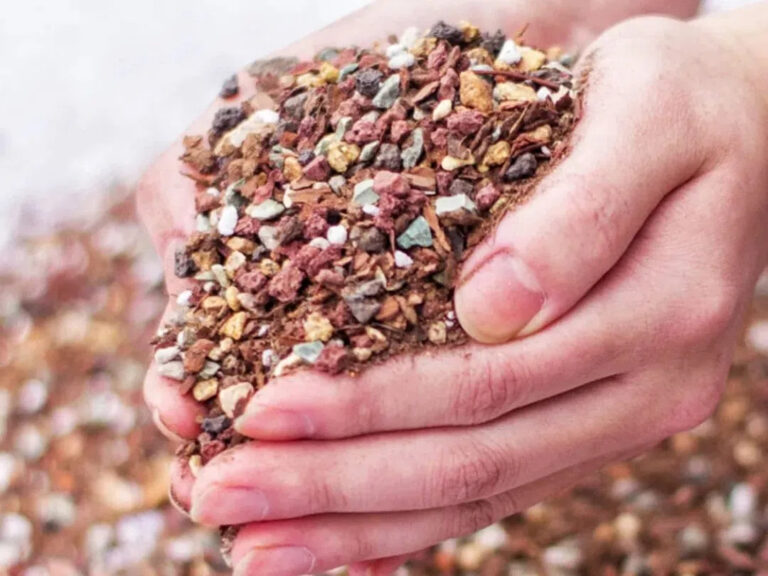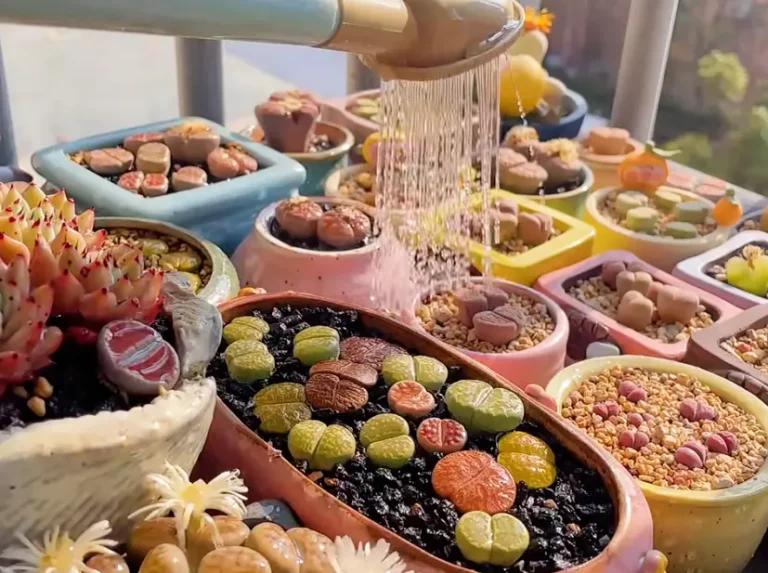What is variegated succulent? Why is it difficult to keep? How to take care of it?
Variegated Succulents with brocade are rare species with white, yellow or pink stripes/patches on their leaves due to genetic mutations (e.g. Neon Jade Dew, White Brocade Kamehameha Dragon). They are more than 10 times more expensive than regular succulents, but are much more difficult to care for:
Weak photosynthesis: reduced chlorophyll in the brocaded part of the plant, requires precise control of light.
Poor disease resistance: easy to water, rotting roots, especially in the summer heat.
Difficulty in reproduction: the success rate of leaf insertion is lower than that of ordinary varieties.
The core principle of raising variegated succulents for newbies: first cultivate the roots, then control the shape
- The law of choosing pots and matching soil
Pots to choose from:
✅ Material: breathable ceramic pots (diameter 2 cm smaller than the plant).
❌ Taboo: deep pots, large pots (easy to accumulate water and rot the roots).
Soil proportion:
✅ 70% granules (volcanic rock/cinder/river sand, 3-6mm size) + 30% nutrient soil (charcoal soil/rotten leaf soil).
- Key steps for potting
Root trimming: cut off the dry and rotting roots, keep the healthy main root.
Root drying: Place in a cool and ventilated place for 5-7 days until the root wound is dry.
Potting: Plant with slightly moist soil, no watering for a week, and maintain in diffused light.
Variegated Succulents seasonal care schedule
- Growing season (spring and fall): rapid growth period
Light: at least 4 hours of direct light per day (e.g. south-facing windowsill).
Watering: Water thoroughly when the soil is completely dry (finger inserted 2cm into the soil to detect).
Fertilizer: liquid succulent fertilizer (N-PK ratio 5-10-5) once a month.
- Dormant period (summer/winter): life-preserving mode
Summer (above 30℃):
✅ Shade: Filter strong light with 50%-70% shade net.
✅ Water cut-off: stop watering adult plants completely, seedlings only a few drops along the edge of the pot when the leaves are soft (night operation).
✅ Ventilation: open the windows 24 hours a day or circulate the air with an electric fan.
Winter (below 5°C):
✅ Move indoors and keep above 10°C.
✅ Disconnect water and give bright diffused light.
Emergency treatment of variegated succulent
- Watering of leaf blade
Cause: overwatering or high temperature and humidity.
First aid:
① Remove watered leaves.
② Spray carbendazim solution (1:1000 ratio).
Spray with carbendazim solution (1:1000 ratio). ③ Cut off water and strengthen ventilation.
- Fading to green
Cause: insufficient light or too little temperature difference.
Solution:
① Gradually increase light to 4-6 hours per day.
② Increase the temperature difference between day and night (e.g. 25℃ during the day/15℃ at night).
- Vertical growth (long and thin stalks)
Cause: Lack of light or too much water and fertilizer.
Solution:
① Cut off the top healthy part and take new cuttings.
② Keep the bottom stalks, which may sprout side shoots.
Key tips to maintain the color of bougainvillea
Light management:
Full sun in spring and autumn, shade but 30% diffused light in summer.
Use full-spectrum supplemental plant light (10,000-15,000 lux recommended).
Watering rhythm:
“Water well when dry” during the growing season, and strictly cut off water during the dormant season.
Watering times: spring and fall mornings, late nights in summer, midday in winter.
Soil renewal:
Replace 70% of the soil with granular soil every spring (to prevent crusting).
Common mistakes that must be avoided
Use of “medicated bougainvillea”:
The mortality rate of bougainvillea faked by spraying herbicides is more than 90%, and the color will fade away.
Excessive fertilization:
high nitrogen fertilizer is limited to spring and autumn, summer and winter prohibited.
Frequent pot changes:
can be changed once a year, root damage will lead to fade brocade.
Summary: The care of variegated succulents needs to follow the natural rhythm and reduce human interference. Mastering the core rules of lighting, watering and soil, even a novice can make these “living works of art” bloom for a long time!





